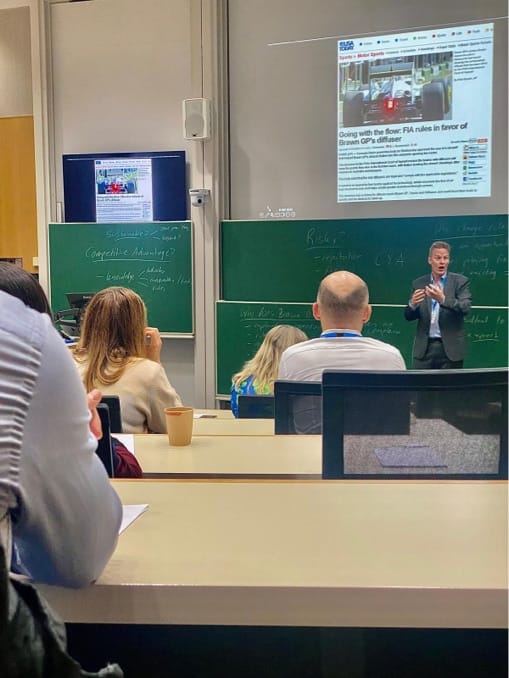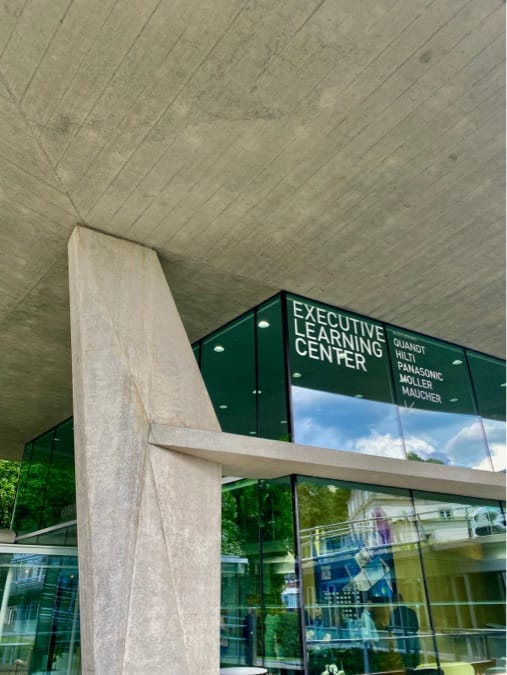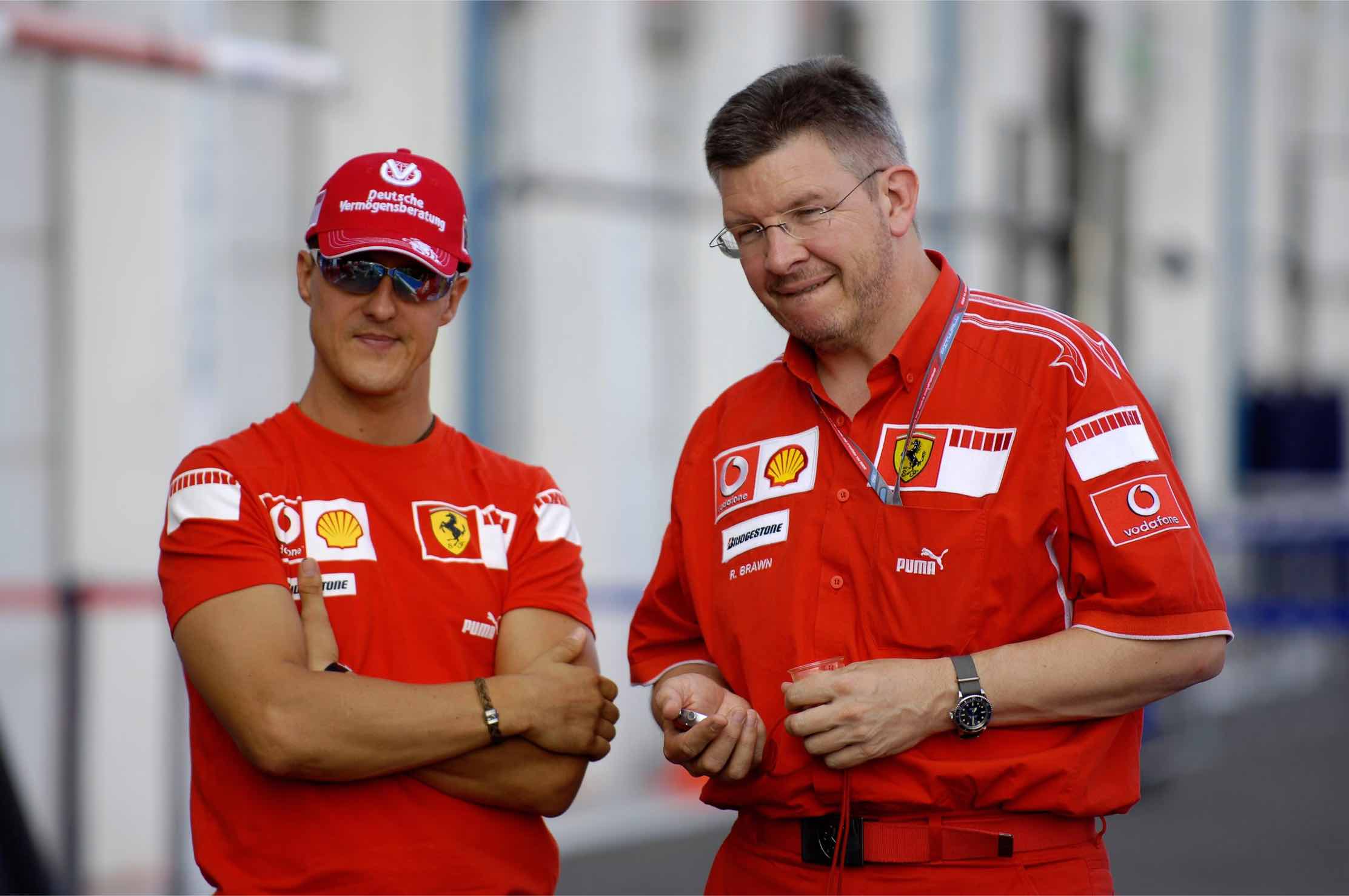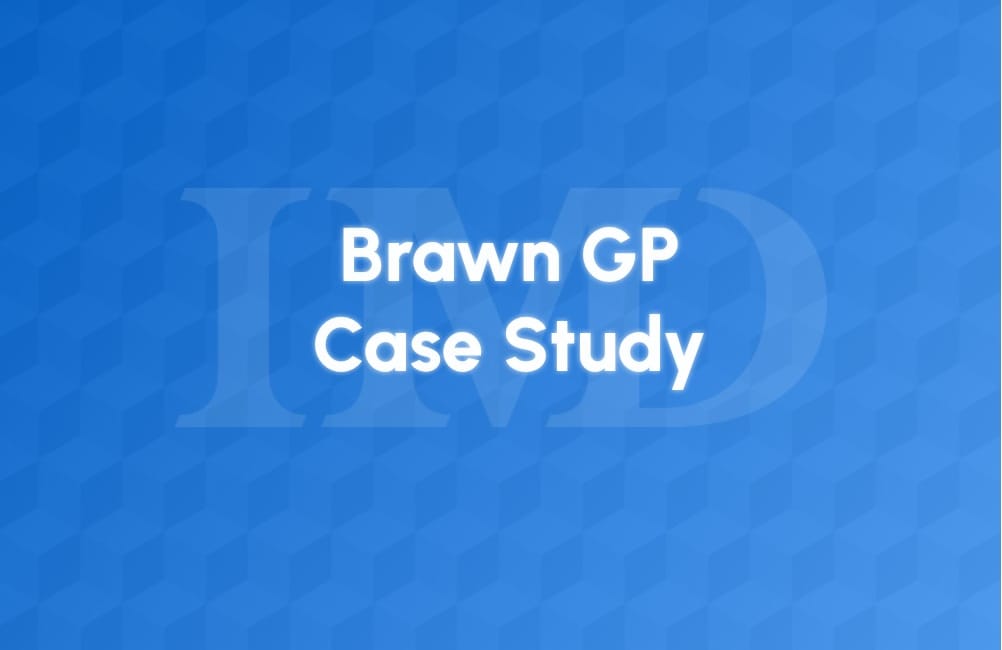Lausanne, Switzerland, home to the IMD Business School, provides an idyllic backdrop for learning and innovation. The school is renowned globally for its world-class business programs, cutting-edge research, and numerous online learning possibilities. Yet nothing substitutes a live interactive lecture. This was best demonstrated at the "Strategy Beyond the Market" class by David Bach, a distinguished Professor of Strategy and Political Economy and one of the institution's standout faculty members.
Professor Bach, who honed his expertise at Yale and Berkeley, is one of those rare individuals who can transmit universal principles in simple, understandable terms. He has navigated many circles of education while maintaining a sense of humor, energy, and excitement, which he effortlessly transmits to his students. You leave the room with more questions than you had before entering it. This is the hallmark of a true professional—someone who spreads excitement for the subject like a virus. A person who embodies knowledge can truly share it.



In this blog post, I will provide a sneak peek into the "Strategy Beyond the Market" masterclass, which delves deeply into the strategic imperatives that transcend traditional market boundaries: navigating complex regulatory environments, managing stakeholder relationships, and harnessing the power of non-market strategies for competitive advantage.
The Fairy Tale True Story of Brawn GP
The case we were reading for this class was the story of Brawn GP's miraculous rise to the top of Formula One in 2009, which truly is a testament to ingenuity and perseverance. What’s most intriguing about this case is that the unique combination of circumstances, specific strategies, and overall sequence of events make it impossible to replicate. Yet it clearly illustrates the principle of navigating through uncertainty and spotting opportunities even amid chaos, which is valuable to virtually anyone.
The Brawn GP story is a remarkable example of achieving extraordinary success with minimal initial investment. The team's ability to innovate, adapt, and perform under financial constraints, coupled with strategic leadership, resulted in a highly successful season both on and off the track. The return on investment and the ability to secure both the Drivers' and Constructors' Championships in their debut season underscore the incredible impact of their efforts.
Brawn's Experience & FIA Sabbatical: An Unlikely Key to Success
Ross Brawn's extensive career in Formula One laid the groundwork for his later success with Brawn GP. Starting at March Engineering in 1976, Brawn quickly advanced to significant roles at Williams, Benetton, and Ferrari, where he honed his skills in race strategy and aerodynamics. His expertise was instrumental in Michael Schumacher's early championships and Ferrari's dominance from 1999 to 2004, securing multiple Constructors' and Drivers' Championships.

In 2007, following his departure from Ferrari at the end of 2006, Brawn took on an advisory role with the FIA. During his sabbatical year, he assisted the FIA with revising technical regulations and rulebook standards for Formula One. Rather than getting buried under endless technical papers and burning out, Brawn’s deep immersion in F1's technicalities and his role in advising the FIA on technical rules positioned him perfectly to exploit a regulatory loophole with the double diffuser, ultimately leading to one of the most astonishing success stories in the industry. That's what I call a strategic sabbatical! 😄🌴
In 2007, Brawn took on the role of team principal at Honda, aiming to transform the struggling team. However, Honda's sudden withdrawal from Formula One in 2008 left the team in absolute jeopardy. Demonstrating resilience and strategic acumen, Brawn led a management buyout, forming Brawn GP in March 2009. His deep understanding of F1 regulations enabled the team to develop the innovative double diffuser, exploiting a loophole that provided a crucial aerodynamic advantage.
Despite operating with a significantly lower budget than their rivals, Brawn GP's technical innovation and strategic leadership led to an extraordinary 2009 season. The team won both the Drivers' Championship with Jenson Button and the Constructors' Championship. This success underscored how expertise, innovative thinking, and effective leadership can triumph over financial and operational constraints. So what was the problem? The problem was...
Now let’s take a look at the numbers. Here’s a sneak preview to get an understanding of the immense business success we’re looking at here. And I would like to emphasize three key points.
Cost Efficiency: 3X Performance on a Lean Budget
To determine the cost efficiency of Brawn GP compared to other top teams, we can use the estimated budgets and their performance metrics. Here’s how we can approach it:
Budget: Brawn GP operated on a significantly lower budget compared to other top teams. Their estimated budget was approximately £100 million compared to teams like Ferrari and McLaren with budgets of around £300-400 million.
Performance: In the 2009 season, Brawn GP achieved 1 Drivers' Championship (Jenson Button), 1 Constructors' Championship, and 8 total wins.
Cost Efficiency (CE) Formula:
CE = Budget Performance Metric
This formula can help us calculate the cost per win and cost per championship:
Cost Per Win (Brawn GP) = £100 million 8 wins = £12.5 million per win
Cost Per Win (Top Teams) = £300 million 8 wins = £37.5 million per win
For teams with higher budgets:
Cost Per Win (Top Teams) = £400 million 8 wins = £50 million per win
Now for the Championships:
Cost Per Championship (Brawn GP) = £100 million 2 championships = £50 million per championship
Cost Per Championship (Top Teams) = £300 million 2 championships = £150 million per championship
For higher budget tear it would be:
Cost Per Championship (Top Teams) = £400 million 2 championships = £200 million per championship
These simple calculations show how Brawn GP operated at a significantly higher cost efficiency compared to other top teams. Specifically:
- Cost Per Win:
- Brawn GP: £12.5 million per win
- Top Teams: £37.5 - £50 million per win
- Cost Per Championship:
- Brawn GP: £50 million per championship
- Top Teams: £150 - £200 million per championship
Brawn GP achieved remarkable success on a much smaller budget, exemplifying superior cost efficiency. This naturally leads us to the next chapter, which is employee impact, as such efficiency can’t exist without the impact of a highly motivated team.
Employee Impact: "Do-or-Die" Scenario
The decision to buy out the team saved approximately 700 jobs. Please note that employees took a 30-40% salary cut to keep the team operational. The salary cuts taken by Brawn GP employees play a significant role in understanding the financial discipline and sacrifices made to achieve success. The commitment of the employees and strategic financial management played a crucial role in turning around the team's fortunes, emphasizing the importance of dedication and effective resource allocation in achieving remarkable results.
This situation reminds me of "David and Goliath: Underdogs, Misfits, and the Art of Battling Giants" book by Malcolm Gladwell, which directly parallels the Brawn GP story. Gladwell examines how underdogs can succeed against formidable odds by leveraging their unique strengths and thinking differently. Brawn GP’s triumph against well-funded and established competitors embodies the spirit of Gladwell's analysis of the David vs. Goliath dynamic.
The Brawn GP story exemplifies how individuals often thrive under seemingly insurmountable pressure, igniting a spirit of determination and innovation. Faced with financial constraints, a lack of sponsors, and a rapidly approaching season, the team embodied an underdog mentality akin to the classic David vs. Goliath narrative. The employees' willingness to accept significant salary cuts and their unwavering commitment to the team's success fueled a collective drive that defied the odds. In this intense, "do-or-die" scenario, the unfair advantages of competitors and the pressing constraints fostered an environment where thinking outside the box became essential.
Richard Branson: The Last-Minute Savior & Lucky Guy
Richard Branson's involvement with Brawn GP resulted from a combination of strategic timing and his interest in Formula One before the opportunity was there for him to grab. Even prior to the formation of Brawn GP, Branson had already shown interest in entering the sport, particularly if it became more cost-effective and environmentally friendly. When Honda announced their withdrawal from F1, leaving the team in financial need, Branson saw a timely opportunity for him to enter the field.
Just before the start of the 2009 season, Branson finalized a sponsorship deal with Brawn GP, recognizing the potential of the newly formed team after their strong pre-season performance. This eleventh-hour decision provided crucial funding, enabling Brawn GP to remain competitive. Branson's involvement not only gave him a foothold in F1 but also aligned with his broader vision of promoting sustainable technologies through Virgin's diverse ventures.
Bonus Point: No Entry Fee
Brawn GP was able to bypass the usual £1 million entry fee for the 2009 Formula One season. After Honda's sudden withdrawal from the sport in December 2008, Ross Brawn purchased the team for £1, effectively saving it from collapse. Recognizing the unique situation and financial challenges, the FIA treated Brawn GP as a continuation of the Honda team rather than a new entrant. This decision, supported by FIA (where Brawn spent his sabbatical year advising the organization) vice-president Keith Hayes, allowed the team to enter the competition without the standard entry fee, facilitating their remarkable success in the 2009 season. This decision underscores how strategic financial management and external support can play pivotal roles in achieving high cost efficiency and competitive success.
Risks and Challenges
Yet, it was not only smooth sailing and opportunities; Brawn GP faced significant operational challenges and regulatory changes during the remarkable 2009 season:
Operational Challenges:
- Budget Constraints: Brawn GP operated on a significantly lower budget compared to their competitors, which limited their resources for car development and operations.
- Time Constraints: The team had limited time to adapt and prepare for the 2009 season following Honda's abrupt exit from Formula One in late 2008 and the subsequent management buyout led by Ross Brawn in March 2009.
- Staff Adjustments: The need to retain key staff and manage morale was critical, especially since employees had to take significant salary cuts (30-40%) to keep the team operational.
- Technical Integration: Integrating the Mercedes engine into the car, which was originally designed for a Honda engine, posed significant technical challenges that needed to be overcome quickly and efficiently.
Regulatory Changes:
- 2009 Aerodynamic Regulations: The 2009 season saw significant changes to the aerodynamic regulations aimed at reducing downforce and improving overtaking. This included changes to the front and rear wings, bodywork, and the introduction of the KERS (Kinetic Energy Recovery System).
- Double Diffuser Controversy: The double diffuser design exploited a loophole in the new aerodynamic regulations. Initially, this design was challenged by other teams, leading to scrutiny and protests. However, the FIA eventually ruled the design legal, allowing Brawn GP to maintain their competitive advantage.
- Economic Impact: The broader economic downturn affected the financial stability of teams across the grid, influencing sponsorships, budgets, and overall financial planning.
These operational challenges and regulatory changes played a critical role in shaping Brawn GP's strategy and required innovative solutions to overcome, further underscoring their extraordinary success.
Results: Championships and Titles
Brawn GP secured both the Drivers' Championship with Jenson Button and the Constructors' Championship in their debut season. The team achieved 8 wins in the 2009 season, underscoring their extraordinary performance and strategic excellence.
- On March 6, 2009, Ross Brawn led a management buyout of the Honda Racing F1 Team, forming Brawn GP. It was purchased for £1.
- On November 16, 2009, it was sold to Mercedes-Benz for €100 million (approximately £90 million based on historical exchange rates).
The Brawn GP story is an extraordinary success, where the numbers speak for themselves: securing both major championships, achieving multiple wins, and realizing an astonishing return on investment. This remarkable achievement underscores the power of innovation, strategic leadership, and resilience in turning challenges into unprecedented success.
Conclusion
The Brawn GP story is a compelling illustration of how strategic innovation, effective leadership, and resilience can lead to extraordinary success despite significant challenges. Ross Brawn's extensive experience in Formula One, coupled with his deep understanding of the sport's regulations, enabled the team to exploit a crucial loophole with the double diffuser. This technical innovation, combined with Brawn's strategic leadership, laid the foundation for the team's unprecedented success in their debut season.
Key factors contributing to Brawn GP's success include:
- Brawn's Experience and FIA Sabbatical: Brawn's sabbatical with the FIA in 2007, where he assisted in revising technical regulations, gave him a unique advantage in understanding and exploiting regulatory loopholes.
- Richard Branson's Last-Minute Investment: Branson's timely financial support provided crucial funding just before the 2009 season began, enabling Brawn GP to compete effectively.
- Cost Efficiency: Operating on a budget of £100 million, significantly lower than competitors' £300-400 million, Brawn GP achieved superior cost efficiency with £12.5 million per win compared to £37.5-50 million per win for top teams.
- Employee Commitment: The team's success was underpinned by the dedication of its employees, who accepted significant salary cuts to ensure the team's operational stability.
Achievements:
- Championship Titles: Brawn GP secured both the Drivers' Championship with Jenson Button and the Constructors' Championship in their debut season.
- Wins: The team achieved 8 wins in the 2009 season.
- Financial Success: An astonishing 9 billion percent return on investment, transforming a £1 buyout into a €100 million sale to Mercedes-Benz.
Brawn GP's success equals combining engineering mastery and regulatory savvy (Brawn's expertise) with timely funding and team sacrifice (critical support), all amplified by cost efficiency, and accounting for risk factors such as market uncertainty, operational challenges, and regulatory changes.
In Mr. Brawn's own words:
- Ross Brawn
Brawn GP case study highlights the transformative power of strategic thinking, innovation, and resilience. By effectively navigating financial constraints and leveraging technical expertise, Brawn GP not only secured both the Drivers' and Constructors' Championships but also set a benchmark for cost efficiency and return on investment in Formula One.
This remarkable journey underscores that with the right combination of knowledge, strategy, and determination, even the most daunting challenges can be turned into opportunities for unparalleled success.


